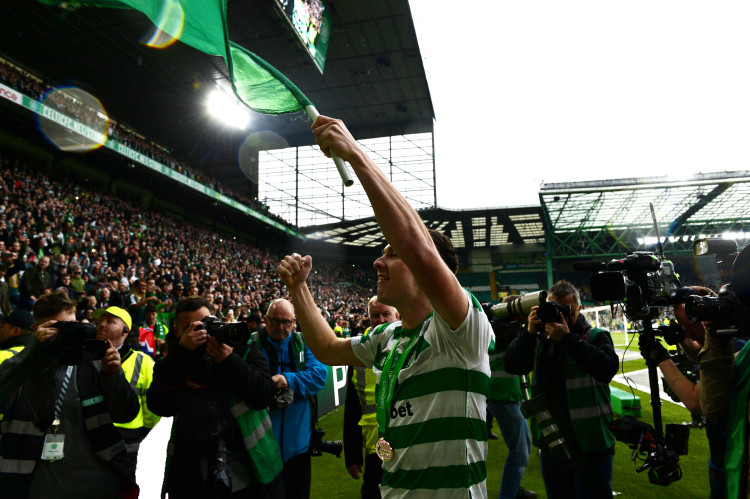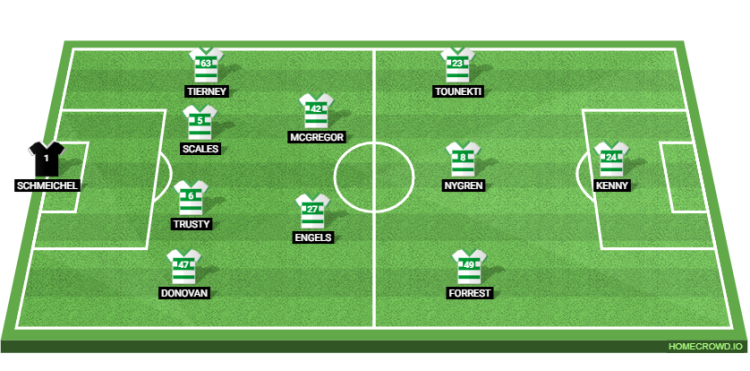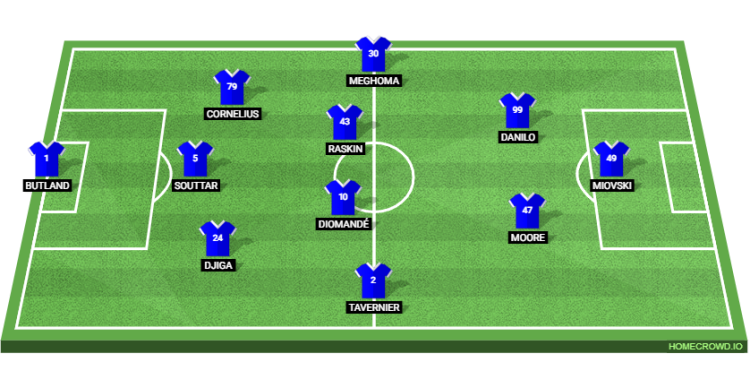
Few fixtures in world football carry the same intensity and emotion as the Old Firm derby, and this Sunday’s Scottish League Cup semi-final at Hampden Park promises to be another dramatic chapter in one of the sport’s fiercest rivalries. Both Celtic and Rangers enter the clash amid managerial upheaval and inconsistent form, adding extra intrigue to an already explosive contest.
For Celtic, the past week has been one of transition. Following the sudden departure of Brendan Rodgers, the club turned to former boss Martin O’Neil to steady the ship, a familiar figure who guided the Bhoys to domestic dominance in the early 2000s. O’Neil made an immediate impact, overseeing a 4–0 win over Falkirk in the Scottish Premiership on Wednesday. Yet despite that emphatic result, Celtic remain second in the table with 20 points, six behind leaders Hearts after ten matchweeks.
The League Cup could provide a welcome distraction for a side still rediscovering its rhythm. Celtic have an enviable record in this competition, having won it seven times in the past nine seasons, including last year’s triumph on penalties against Rangers. However, their defensive fragility remains a concern. They have conceded 10 goals in their last six matches, though their attacking output, also 10 goals over that span, ensures they remain a threat in forward areas. Under O’Neil, the emphasis will likely shift toward tightening defensive organisation while retaining their attacking flair.
Across Glasgow, Rangers have been undergoing their own period of change. The appointment of Danny Röhl on October 20 appears to have revitalised the squad after a poor start under Russell Martin, who was dismissed after just 17 games. Röhl’s arrival has coincided with an upturn in results, two league wins in two games have lifted Rangers from eighth to third place with 15 points, putting them back in the conversation for domestic honours.
The Light Blues’ confidence is further boosted by their recent dominance in Old Firm encounters. They are unbeaten in four meetings against Celtic, drawing the last two, having previously gone seven games without a win in the rivalry. Röhl’s side have shown greater balance in recent outings, scoring and conceding seven goals in their last five matches, suggesting a newfound attacking confidence coupled with occasional defensive lapses.
Celtic’s recent inconsistency contrasts with Rangers’ momentum, but the unpredictable nature of the Old Firm ensures nothing is ever straightforward. With both clubs undergoing transitions in leadership and tactical direction, this semi-final has the potential to serve as a turning point, either reigniting Celtic’s domestic ambitions under O’Neil or signalling the start of a new era of resurgence under Röhl.
Expect a tense, high-stakes affair at Hampden Park, where passion, precision, and composure will decide who books their place in the final, and perhaps who gains the psychological upper hand for the remainder of the Scottish season. The Hard Tackle takes a look at how both sides could line up and what tactics they might employ on the day.
Celtic enter this crucial semi-final clash with several significant absentees that could influence Martin O’Neil’s tactical setup. The Bhoys will once again be without defensive leader Cameron Carter-Vickers, who continues to recover from a long-term knee injury. His composure and aerial dominance have been sorely missed in recent weeks, particularly during transitions. In attack, Jota also remains unavailable due to a similar knee issue, depriving Celtic of their most creative wide outlet and one of their primary goal threats.
Adding to their injury concerns, right-back Alistair Johnston suffered a hamstring strain in the Europa League clash against Strum Graz on October 23, ruling him out of contention for this match. These injuries have forced O’Neil into some tactical reshuffling, particularly in defence, where experience and balance will be crucial against a Rangers side that thrives on pace and direct attacking transitions.
In light of these absences, O’Neil is expected to field a 4-2-3-1 formation, designed to maintain width while providing stability through the middle of the park. Veteran goalkeeper Kasper Schmeichel will start between the posts, bringing calmness and communication to a restructured backline. In defence, Colby Donovan is likely to slot in at right-back, while Auston Trusty and Liam Scales should partner at the heart of defence, combining Trusty’s physical presence with Scales’ ball-playing ability. On the left flank, Kieran Tierney will provide attacking width and defensive reliability, offering both overlap runs and defensive cover against Rangers’ wingers.
In midfield, captain Callum McGregor will anchor the double pivot alongside Arne Engels, with the pair tasked with controlling possession and shielding the back four. McGregor’s ability to dictate tempo and orchestrate play from deep will be key to Celtic’s transitions, while Engels adds energy and pressing intensity.
Ahead of them, James Forrest, Benjamin Nygren, and Sebastian Tounekti are expected to form the attacking midfield trio. Forrest brings invaluable Old Firm experience and direct running down the right wing, while Nygren’s creativity and Tounekti’s pace offer O’Neil tactical flexibility in the final third. Up front, Johnny Kenny should lead the line as the lone striker, using his movement to stretch Rangers’ defensive line and create openings for the supporting attackers.
Given the context of the match and O’Neil’s emphasis on discipline, Celtic’s setup will likely prioritise compactness and structured pressing. The objective will be to control midfield spaces, exploit width through Tierney and Forrest, and capitalise on Rangers’ defensive lapses, all while maintaining the composure required in one of football’s most emotionally charged fixtures.
Probable Lineup (4-2-3-1): Schmeichel; Donovan, Trusty, Scales, Tierney; Engels, McGregor; Forrest, Nygren, Tounekti; Kenny

Rangers manager Danny Röhl faces a few selection dilemmas ahead of the Old Firm semi-final, with key injuries affecting both his defence and attack. Central defender Dujon Sterling remains unavailable due to a muscle injury sustained in training, while forward Rabbi Matondo is also ruled out as he continues his recovery from an ankle issue. Both absences reduce Röhl’s options in crucial areas of the pitch, particularly in terms of defensive versatility and attacking depth.
There is further concern surrounding Derek Cornelius, who is a doubt for this fixture after suffering a swollen eye in midweek training. The coaching staff will give the Canadian centre-back as much time as possible to prove his fitness, as his aerial presence and composure under pressure would be vital in dealing with Celtic’s set-piece threat. Should he be unavailable, Röhl may need to adjust his backline accordingly.
In more positive news, striker Danilo has been passed fit and is expected to return to the starting lineup. His availability provides a major boost to Rangers’ attacking options, as his sharp movement and link-up play have been key to the team’s recent resurgence. Röhl will look to pair him with Mikey Moore and Bojan Miovski, both of whom have impressed in recent weeks with their pace, creativity, and pressing work rate.
Tactically, Rangers are likely to continue with Röhl’s preferred 3-4-2-1 formation, which has brought greater balance between defensive solidity and attacking flexibility. Jack Butland will start in goal, marshalling a back three that should include Nasser Djiga, John Souttar, and, fitness permitting, Derek Cornelius. Djiga’s athleticism and Souttar’s defensive reading complement Cornelius’s physical presence, forming a compact unit capable of absorbing Celtic’s wide attacks.
In midfield, captain James Tavernier will occupy the right wing-back role, where his attacking instincts and set-piece delivery will once again be crucial. On the left, Jayden Meghoma will offer defensive cover and overlapping runs to stretch Celtic’s back line. The central pairing of Nicolas Raskin and Mohamed Diomande will provide a blend of control and aggression, responsible for breaking up play and initiating quick transitions through midfield.
Further forward, Mikey Moore and Danilo are expected to operate just behind Bojan Miovski, creating an interchanging front three designed to unsettle Celtic’s defence with dynamic movement and positional rotation. Moore’s direct running and ability to find pockets of space between the lines will complement Danilo’s finishing instincts, while Miovski’s physicality and hold-up play will allow Rangers to build attacks more patiently when needed.
Röhl’s tactical approach will likely focus on maintaining compactness in defence, pressing aggressively in midfield, and exploiting Celtic’s vulnerabilities in transition. With Tavernier providing width and set-piece threat, and Miovski leading the line with confidence, Rangers will aim to use pace and precision to catch Celtic off guard, particularly on the counterattack.
Probable Lineup (3-4-2-1): Butland; Djiga, Souttar, Cornelius; Tavernier, Diomande, Raskin, Meghoma; Moore, Danilo; Miovski

Rangers are currently unbeaten in their last four meetings with Celtic in all competitions, winning twice and drawing twice. This marks their longest unbeaten run in the rivalry since 2011, showcasing their recent psychological edge in Glasgow derbies.
Celtic have lifted the Scottish League Cup seven times in the past nine seasons, including last year’s victory over Rangers in the final. They are also unbeaten in their last eight matches in this competition, scoring 21 goals and conceding just four in that run.
Celtic have conceded 10 goals in their last six matches, highlighting ongoing instability at the back — whereas Rangers have kept three clean sheets in their last five outings under Danny Röhl, showing signs of renewed defensive organisation.
The past five Old Firm clashes at Hampden Park have produced 15 goals in total (an average of three per game), with both teams scoring in four of those encounters. This suggests another open and high-intensity semi-final could be on the cards.
Rangers captain James Tavernier has been directly involved in five goals in his last six Old Firm appearances (three goals, two assists), all coming from set-piece or penalty situations. This critical area could once again tilt the balance in Rangers’ favour.
When it comes to defining Old Firm battles, few players have left their mark on the fixture quite like James Tavernier. The Rangers captain remains one of the most influential figures in Scottish football, not just for his leadership, but for his remarkable consistency and impact in big moments. His ability to rise to the occasion, particularly against Celtic, continues to set him apart.
Operating as a right wing-back under Danny Röhl, Tavernier’s game combines defensive reliability with exceptional attacking output. His pace, stamina, and tactical intelligence allow him to shuttle tirelessly up and down the flank, while his set-piece prowess often provides the difference in tight encounters. Few defenders across Europe can boast his attacking numbers, he has been directly involved in five goals in his last six Old Firm appearances, either through penalties, free kicks, or precise deliveries into the box.
Beyond his technical ability, Tavernier’s influence as captain is immeasurable. His calmness under pressure, composure from the spot, and knack for timing crucial runs make him a constant threat, even when Rangers are on the back foot. Against a Celtic side that has shown vulnerability in wide areas and set-piece situations, Tavernier’s ability to dictate the tempo on the right flank could prove decisive.
Whether through a pinpoint cross, a curling free-kick, or a composed penalty, James Tavernier is the player most likely to swing the momentum in Rangers’ favour, and in a semi-final of this magnitude, his leadership and precision could once again define the contest.
Old Firm clashes are rarely short on drama, and this Scottish League Cup semi-final promises to deliver another fierce chapter in the storied rivalry between Celtic and Rangers. Both sides enter this match amid transitional phases, Celtic under returning interim boss Martin O’Neil, and Rangers rejuvenated under Danny Röhl, which adds an extra layer of unpredictability to proceedings.
Celtic’s attacking quality, spearheaded by James Forrest and Benjamin Nygren, will test Rangers’ reshaped backline. However, their defensive frailties and injury absences, especially at the back, could prove costly against a Rangers side that looks far more structured and efficient in recent weeks. James Tavernier’s set-piece threat and the return of Danilo could make the difference, particularly if the Gers can exploit Celtic’s vulnerability in defending wide deliveries.
While O’Neil’s side will draw confidence from their impressive record in the competition, Rangers’ form, discipline, and confidence under Röhl suggest they have the edge heading into this semi-final. Expect a cagey first half followed by a more open second period, with both teams creating chances, but Rangers’ superior organisation and clinical finishing might tilt the balance their way.